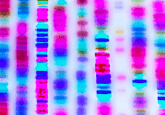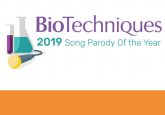Advances in transcriptomics provide insights into brain disease and development

Research presented at SfN 2019 highlights how transcriptomics has become a useful tool for studying the underlying cellular mechanisms of brain disease and development.
In recent years, technological advancements in transcriptomics (the process of studying a cell’s complete set of RNA transcripts) have provided new opportunities for researchers to study brain diseases and development at the single-cell level.
This was highlighted by a series of abstracts, all presented recently at the SfN Neuroscience 2019 (Chicago, IL, USA; 19-23 October 2019), where researchers utilized transcriptomics to study the underlying cellular processes associated with addiction, degeneration and normal development.
In the first presentation, Philipp Mews (University of Pennsylvania; PA, USA) explained how by using transcriptomics on mouse models of cocaine addiction, his team has demonstrated that repeated exposure to the drug induces epigenetic alterations that are responsible for the maladaptive behaviors associated with addiction, such as craving and relapse.
Exposure to cocaine may permanently scar DNA-protein complexes in the brain which alters gene regulation machinery and primes neurons to establish a potential mechanism for relapse. Mews explained how future research will focus on identifying this mechanism and determining if the effect is reversible.
“Advances in transcriptomics technology overcome basic challenges in neuroscience by letting us look inside the molecular machinery of brain cells, one cell at a time.”
Then, Arnold Kriegstein (University of California; San Francisco, CA, USA) discussed how his research group used transcriptomics to produce the first single-cell atlas of prenatal and postnatal human cortical development.
By applying single-nucleus RNA sequencing to postmortem tissue samples, the researchers were able to identify genes and pathways that guide the development of cells in the human cerebral cortex from prenatal development to the age of 50. Theses results will likely prove useful for the future development of targeted therapies for neurodevelopment disorders.
- CRISPR cuts RNA to engineer transcriptomes
- Epitranscriptomics and the next wave of cancer therapies
- SfN Neuroscience 2019
Finally, Vivek Swarup (University of California, Irvine; CA, USA) presented new research that combined transcriptomics with a large data-driven analysis to identify the underlying biological processes that are altered in Alzheimer’s disease.
Single-cell RNA sequencing was used to profile the transcriptomes of postmortem human brains from individuals with or without Alzheimer’s disease. They found that certain gene networks change together throughout the development. The researchers feel that these regulatory genes could serve as potential targets for future therapies.
“The neuroscience research presented today shows that advances in transcriptomics technology overcome basic challenges in neuroscience by letting us look inside the molecular machinery of brain cells, one cell at a time,” commented press conference moderator Naomi Habib (Edmond & Lily Safra Center for Brain Sciences; Jerusalem, Israel). “These advances give us a better understanding of the process of normal development as well as more insight into pathological states, such as drug addiction and neurodegenerative disease.”





